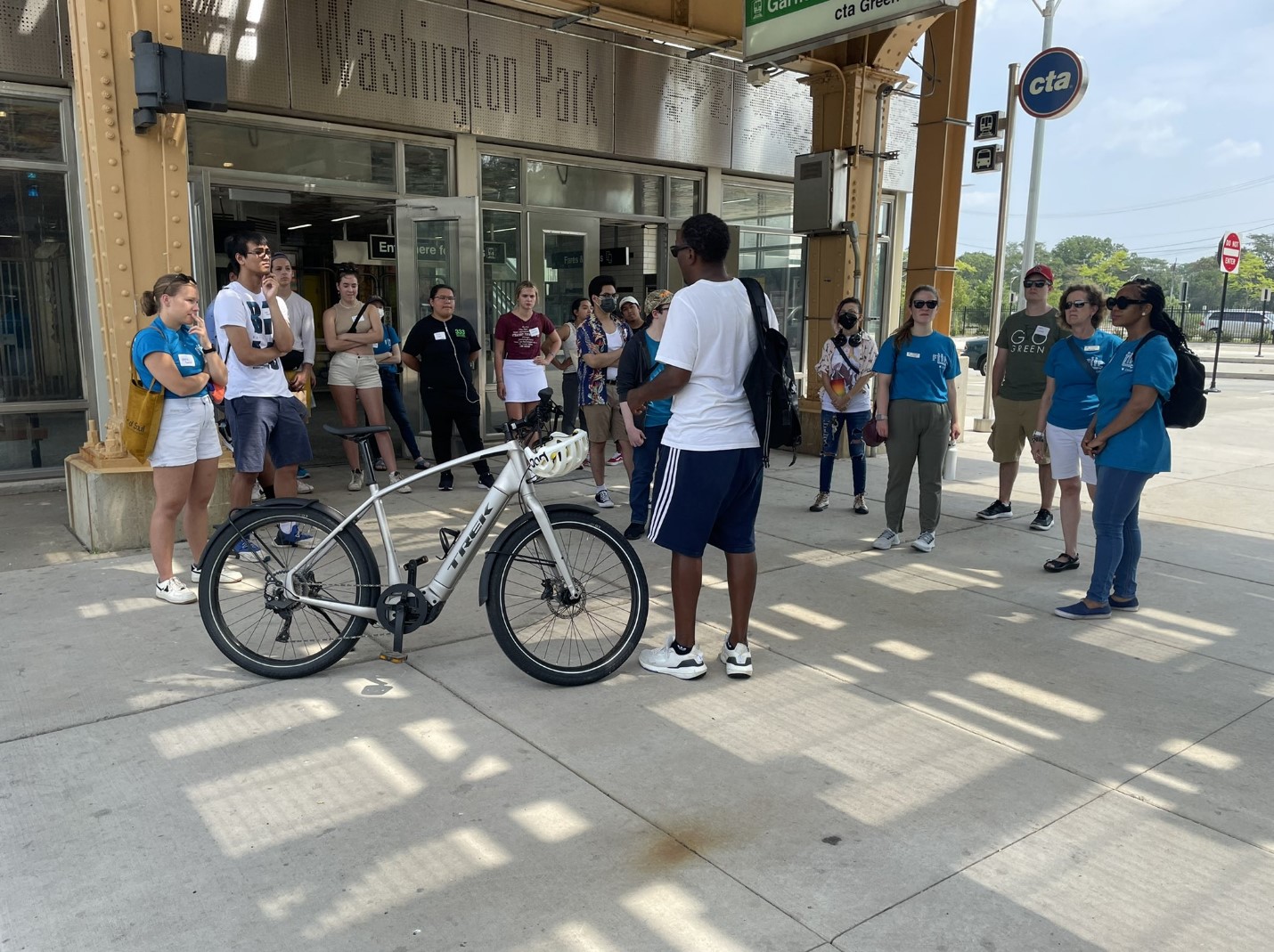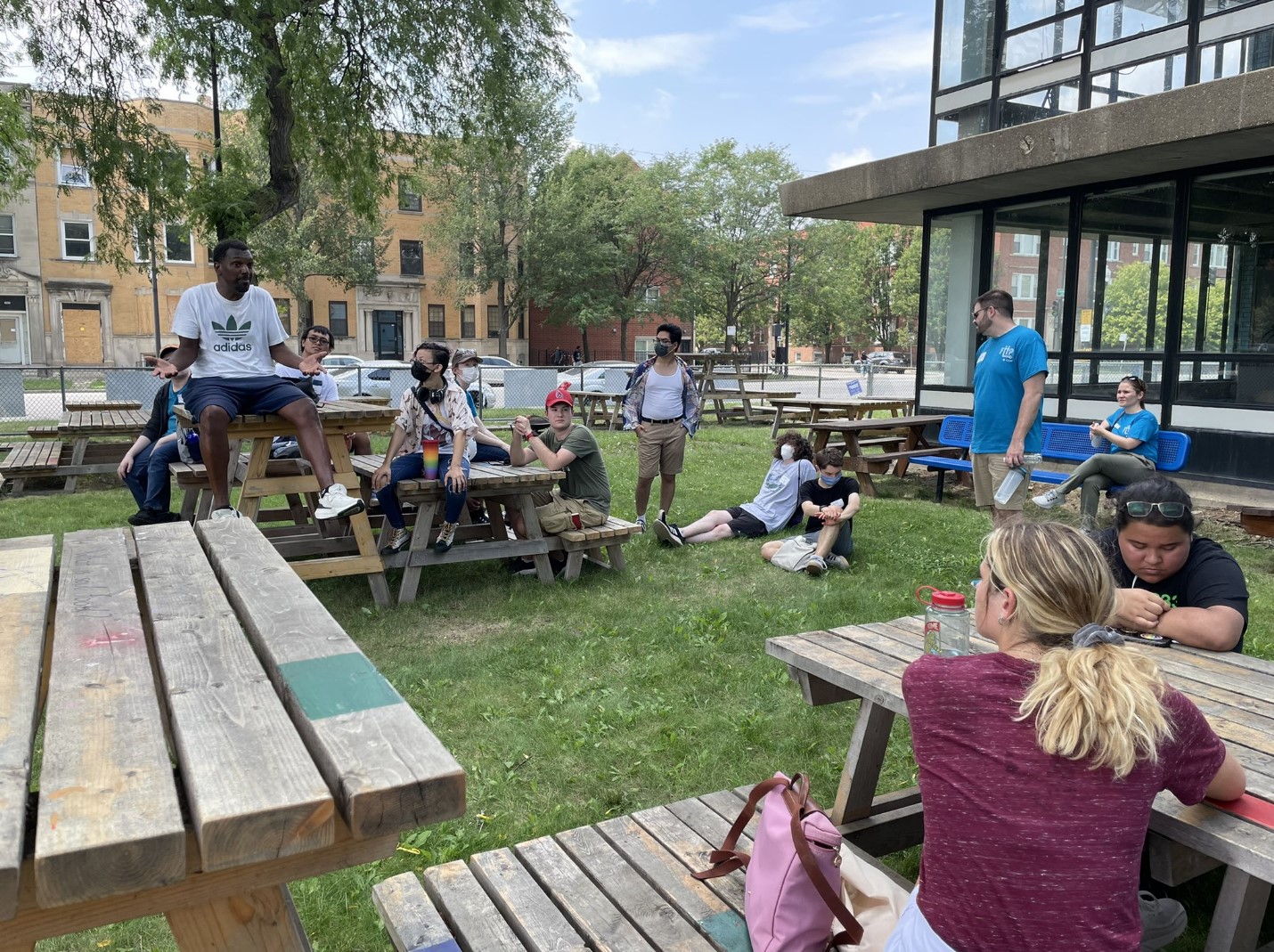
This summer, more than 30 high school and college students from across northeastern Illinois participated in the Future Leaders in Planning (FLIP) program. FLIP, now in its 13th year, is a leadership development opportunity for students to explore urban planning and contribute to a better future for the region. This year, the Chicago Metropolitan Agency for Planning (CMAP) partnered with MUSE Community + Design to develop an engaging virtual program that emphasized the importance of equity in every part of the planning process.
The four-session program guided students through the stages of planning and provided them with tools to make changes in their own community.
In the first session, guest speaker Tonika Johnson explained how she became interested in urban planning. During her commute in high school, she noticed differences between her neighborhood, Englewood, and her school’s neighborhood 15 miles north. “I came to realize that I was riding through Chicago segregation,” Tonika said. “And that’s when I started to understand the connection between race, geography, and Chicago segregation.”
Tonika created the Folded Map project to further explore differences between Chicago’s North and South Sides, and to start a dialogue about the social, racial, and institutional conditions that divide the city.
Inspired by her presentation, FLIP participant William Snyder reached out to Tonika to see how he could lead a similar project in the Indiana city where he attends college.
Throughout the program, students also heard from Dr. Kate Lowe, associate professor of urban planning and policy at the University of Illinois at Chicago; Lindsay Bayley, senior planner at CMAP; and Nina Idemudia, assistant commissioner of the Chicago Department of Planning and Development.
William, a student from Lake Zurich studying urban planning, said he really enjoyed hearing from practicing professionals. “We talk about hypotheticals a lot in school,” he said, but he liked hearing about real-world projects the speakers had worked on.

In addition to virtual classes, students took a trip to Chicago’s Washington Park, the site of the Elevated Chicago Green Line South project. Ghian Foreman, president of the Emerald South Economic Development Collaborative, led a walking tour. Students visited the recently renovated Garfield Green Line station, a community sunflower garden, and underdeveloped areas within the neighborhood. Students also explored local businesses at Boxville, a community space made from reused container boxes. The tour ended at the Overton School, a former school turned community center.
FLIP participant Dominique Del Valle said it was “very eye opening and exciting to see” residents working together to invest in their community.
Dominique, a college student from Chicago, was also inspired by other FLIP participants, especially younger students, who are passionate about changing their communities. “People are thinking about how the world works and who it works for,” they said.
William also enjoyed making connections with future planners. “I met some really cool people that I am definitely going to keep in touch with,” he said.
Stay tuned for information about next year’s FLIP program in spring 2022.